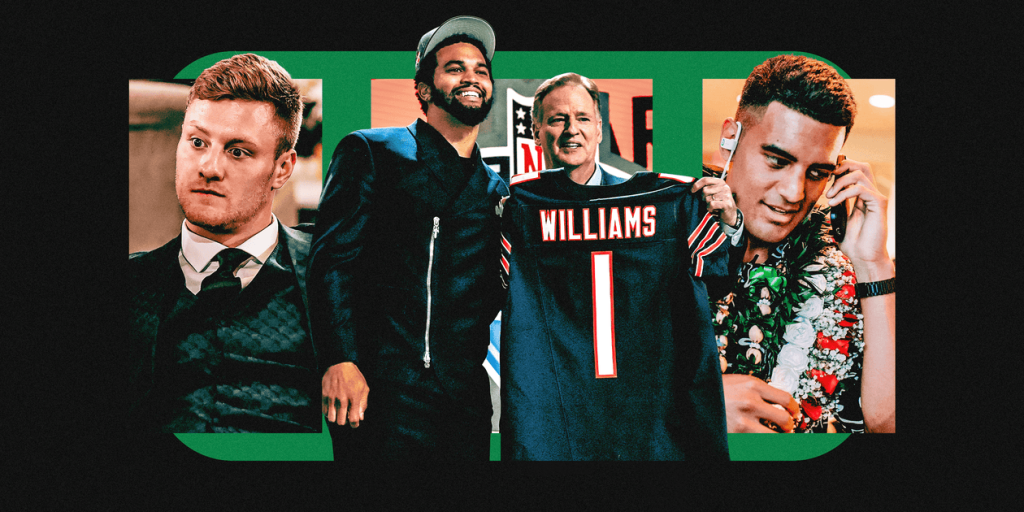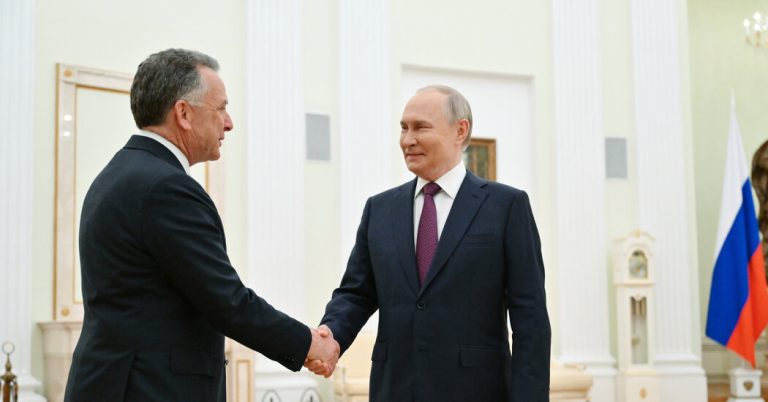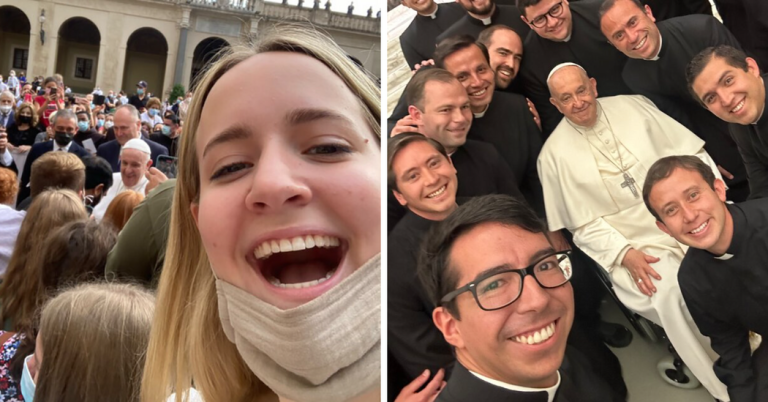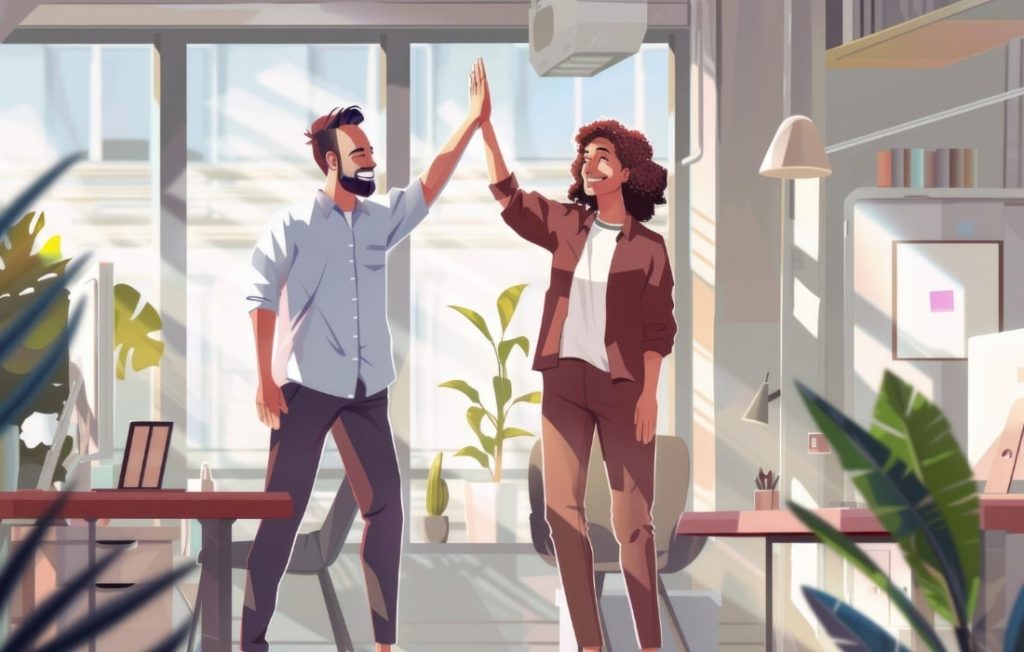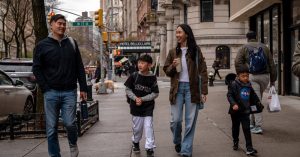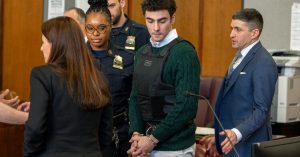The Athletic has live coverage of the first round of the 2025 NFL Draft.
Joe Thomas was trying to shun the spotlight. Instead, his decision to skip the 2007 NFL Draft in New York City to spend the day fishing on Lake Michigan with his dad made waves.
“It was a Saturday, and I usually go fishing with my dad on Saturdays when I’m back home,” Thomas told The Athletic last month. “It was really an easy decision for me to tell my agent I wasn’t interested in going.
“I already had plans.”
The eventual 10-time Pro Bowler answered the Browns’ phone call from the boat as Cleveland selected him at No. 3. His story resonates as an example of a common player debate: to attend or not attend the draft.
The draft process has changed since Thomas’ selection. The event split from two days into three in 2010 and has moved from New York to various host cities since 2015. What used to be six or seven prospects in attendance is now typically one or two dozen, and most of those have already made money through name, image and likeness deals.
This all makes for more nuanced discussions around draft attendance, which also considers factors like draft projections, family attendance, marketing opportunities and travel.
“These guys are seasoned professionals by the time they get into this,” said Tony Agnone, an NFL agent since 1984. “They’re businessmen now. ‘Does it enhance my position to go to the draft? Does it not enhance my position?
“‘Can I control social media? Can I control my own narrative by not going? Can I control it better by going?’”
Each year, the NFL invites prospects — as chosen by a committee, on a rolling basis in March and April — to attend the draft in person. Players can watch picks announced from the green room and, eventually, shake hands with commissioner Roger Goodell after their name is called.
“It’s a great opportunity to enter the league and have people see them as human beings and not just some sort of jersey number with a facemask,” said Ryan Tollner, head football agent at Excel Sports Management. “They get to see who they are, who their family members are. And they get to see the emotions that go into it. I just think those moments are incredibly special.”
From 2010 to ‘19, the first 10 years of the three-day format, an average of 24 players attended the green room each year. Attendance peaked at 30 prospects in 2014, the last year it was held at Radio City Music Hall in New York.

But since the 2020 draft was held virtually due to the COVID-19 pandemic, attendance has teetered. A low (since 2010) of 12 players went to Cleveland in 2021, and just 13 made the trip to Detroit in 2024, though all 13 wound up as Round 1 selections.
A first-round evaluation is the most important factor, said Tollner, who has represented first-round quarterbacks Ben Roethlisberger, Jared Goff, Marcus Mariota and others.
“I don’t think anybody sets out to be at the draft and not be selected in the first round,” Tollner said, adding that the “stakes changed” when the event expanded to three days.
In the old format, the draft featured Rounds 1-3 on Saturday and Rounds 4-7 on Sunday. Now, it’s Round 1 on Thursday, Rounds 2-3 on Friday and Rounds 4-7 on Saturday.
“You as an agent and as a player (need) to be more confident that you (are) being selected in the first round,” Tollner said.
From 1992 to 2009, only one of 115 players to attend (Leeland McElroy) was not a first-round pick. Since 2010, 241 of 303 (79.5 percent) have been drafted in Round 1. Only twice on record has an attendee slid beyond Round 3, both under special circumstances. Mark Herzlich, a Boston College linebacker who overcame a rare form of bone cancer, went undrafted in 2011, and Shaquem Griffin, a UCF linebacker who won AAC Defensive Player of the Year despite having his left hand amputated at age 4, went in the fifth round in 2018.
But there have been plenty of disappointed attendees, especially quarterbacks.
Often the highest-profile players in their classes, quarterbacks’ draft-day slides make for awkward green room moments. Perhaps most famously, potential No. 1 pick Aaron Rodgers slid to 24 in 2005. Brady Quinn, Geno Smith, Johnny Manziel, Teddy Bridgewater, Lamar Jackson, Drew Lock and Malik Willis all drew early-first-round buzz only to slip into the 20s or beyond.
Most recently, Kentucky quarterback Will Levis, like Smith, Lock and Willis, slid out of the 2023 first round completely after being pegged as a possible top-five pick. He didn’t return to watch his second-round selection the next day.
Tollner said he tends to advise quarterbacks to attend the draft only if he’s confident they’ll be a top-10 or -15 pick. QBs already draw enough attention, and watching from home avoids the potential of an uncomfortably long wait in the green room.
“That’s a lot better than the drama of not being selected in the first round,” Tollner said. “Then everybody wonders why.
“‘What did the teams know that the draft prognosticators didn’t see?’”
Even for surefire first-rounders, Round 1 can be a slog. There are pre-draft festivities like the red carpet, and then the actual event takes almost four hours to complete, between TV interviews, analysis and commercial breaks.
“It’s about two hours that you’re going to sit there,” Agnone tells his clients with Eastern Athletic Services. “Are you sure that’s what you want to do? You can be home. You can suffer for those two hours, and you’re still the 15th best player in the country.”
Conversely, the short wait time for the No. 1 selection is more of an incentive than a deterrent.
“When a guy goes in and he knows he’s the No. 1 pick, it’s a pretty quick, easy trip,” said Agnone, who was an adviser to the attorneys of 2024 No. 1 pick Caleb Williams. “You’re out within 15 minutes.”
Attendees for this year’s event in Green Bay, Wis., include two quarterbacks: presumptive No. 1 pick Cam Ward and Jalen Milroe, whom The Athletic’s Dane Brugler has graded in the second to third round. Jaxson Dart, whom Brugler gave a second-round grade, was originally listed as an attendee but apparently backed out, along with edge rusher Mykel Williams and offensive tackle Josh Simmons, according to an updated NFL list. Cornerback Maxwell Hairston was a late addition.

Jalen Milroe Alabama HT
WT
YR
AGE
Ultra-dynamic and intelligent athlete, but will his NFL coaching staff be patient?
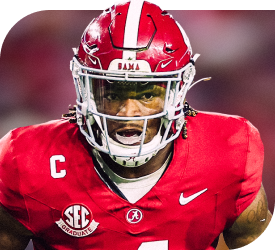
Shedeur Sanders, projected as the second quarterback off the board but facing a wide range of possible outcomes, is by far the most notable non-attendee. He said on his podcast in February that he would likely watch with family and friends in Colorado or Dallas, adding, “I want to spend those moments with my people.”
Milroe’s attendance is particularly interesting given he’s been widely considered a likely Day 2 pick. Agnone pointed to the Baltimore Ravens trading into the end of Round 1 in 2018 to take Jackson as a case study for Milroe.
“A spectacular athlete and a developing quarterback, I believe a lot of teams might trade back into the first round to get that guy,” Agnone said. “I believe that’s how his invitation came into play.
“He’s taking a chance, but remember: Getting the fifth year (on a rookie contract) for an NFL team for a quarterback is a big thing.”

Also unique to this year’s draft is its location. Green Bay is the NFL’s smallest city and the fourth Midwest host city over the past five years. The exception was the 2022 Las Vegas draft, which, perhaps not coincidentally, drew the most prospects (21) since the pandemic.
This year’s 15 attendees fall just short of the 17 in Kansas City in 2023. The NFL provides each with 10 round-trip flights, five hotel rooms and 20 tickets spread throughout the green room and draft theater for the player and his family and friends. But that doesn’t make travel seamless.
“When it was in Radio City in New York, it was probably a little easier to get to. (Same with) Nashville, Las Vegas,” said Alex Beglinger, an agent with Disruptive Sports. “Green Bay is not an easy place to get to.
“I think about a West Coast, high-profile player that’s got to get their whole family up there. I can see that being a factor.”
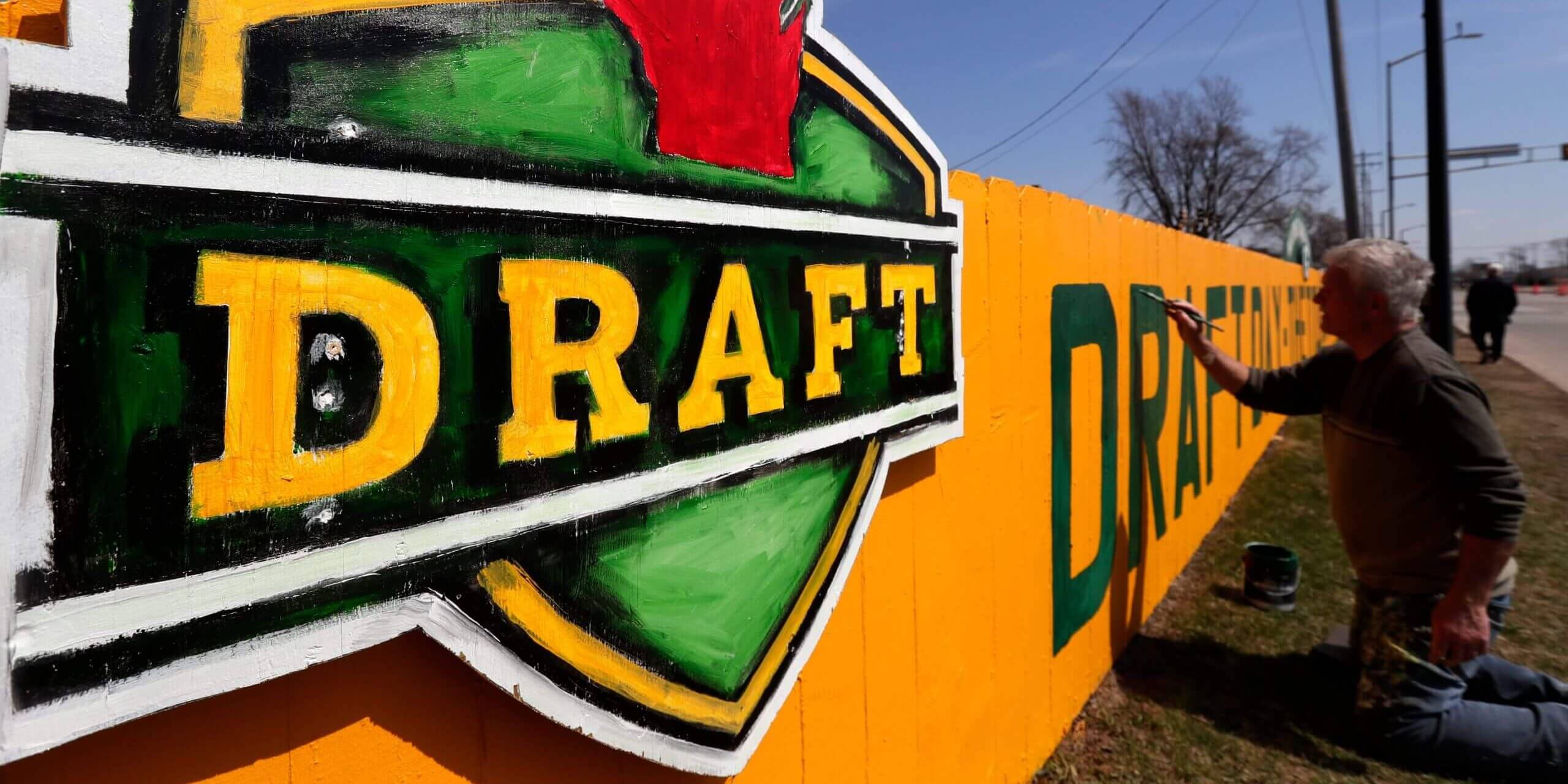
Since 2002 (excluding the virtual 2020 draft), only four of the 29 quarterbacks drafted in the top three did not attend: Jameis Winston (No. 1) and Marcus Mariota (No. 2) in 2015, Baker Mayfield (No. 1) in 2018 and Trevor Lawrence (No. 1) in 2021.
Winston declined so he could share the moment with his grandmother, who was unable to travel for health reasons. Mayfield also stayed home, recreating the draft photo of his idol, Brett Favre, with his family and having a film crew document the event. Neither ESPN nor NFL Network had live footage of Mayfield’s draft party after he was picked.
“The reason why I’m not going to the draft is because it’s never been a one-man show,” Mayfield said at the time, “so I want to be surrounded by family and make it enjoyable for them.”
Tollner said Mariota never considered attending because his family is from Hawaii, and the plan was always for them all to watch together from there.
“It’s such a gift to be able to share it with my family and friends,” Mariota told NFL Network after he was picked. “That’s why I wanted to have it at home, to share this moment with the people who got me here.”
This year, potential top-five pick Ashton Jeanty’s decision to attend came easily. He knew the draft was an important step towards reaching his NFL dream, said Beglinger, a member of the team that represents Jeanty. There were no extenuating factors holding him back.
“You know you’re good enough to be there. They invited you for a reason,” he said. “For Ashton, he would go regardless. We don’t think he’s sliding, and I don’t think that’s going to be an issue.
“But nonetheless, it’s one of those things where if you’re invited, you go.”
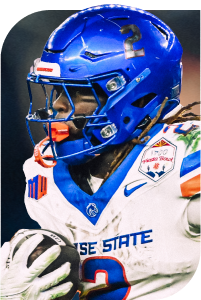
Ashton Jeanty Boise State HT
WT
YR
AGE
Reminiscent of LaDainian Tomlinson in balance, instincts and versatility
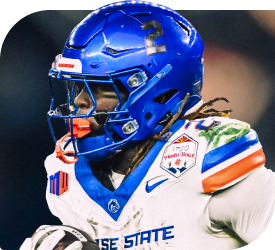
There’s no clear trend of where prospect attendance is heading, but changes could be coming.
Players can already take advantage of marketing opportunities both at the draft and remotely, from the suits they’re wearing to sponsored brand placements. If the league wants more first-round picks to attend, Tollner suggested expanding invites to more Day 2 prospects and adding a “second-day green room.”
From 2010-19, 50 attendees (an average of five per draft) were drafted on Day 2, with only five of those slipping to Round 3.
Tollner and Agnone also predicted the NFL could start paying players a stipend, beyond the covered travel costs.
“This has become such a big deal and such a big moneymaker for the NFL that I think they should and probably will consider (paying players),” Tollner said.
As the draft has evolved from a hotel conference room in New York to a rotating cast of cities with 700,000 fans, there’s a certain glamour of attending that doesn’t fade. Regardless of the myriad factors and changing dynamics, for some players, going to the draft is as simple as accepting the call to their lifelong dream.
“The first step to the visualization of their NFL career is getting that phone call and being drafted,” Beglinger said. “I think that has a much bigger influence on the decision to be at the draft than location or family or anything. This is a big step.”
(Illustration: Demetrius Robinson / The Athletic; Photos: Thomas Boyd, Kirby Lee / Imagn Images, Kevin Sabitus / Getty Images)
